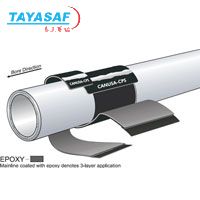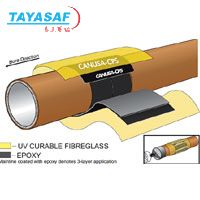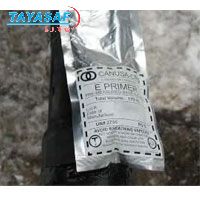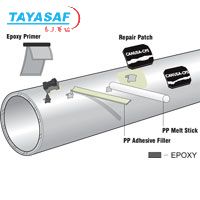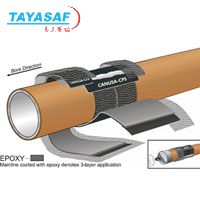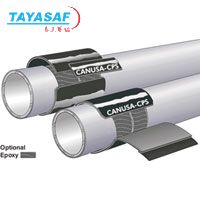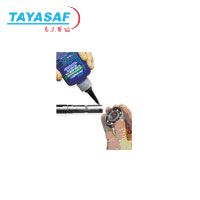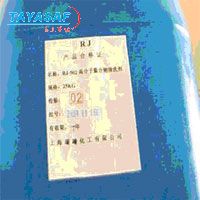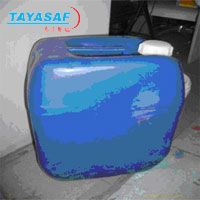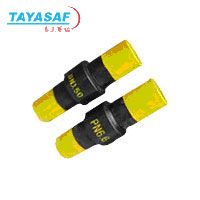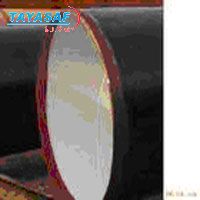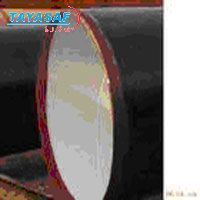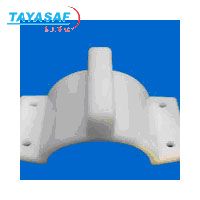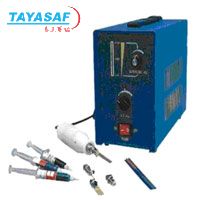Description
Trenton Seal-Wrap is a casing end-seal wrapper consisting of a heavy woven glass coated with a butyl mastic of high dielectric quality wrapped around the end of the casing and on the carrier pipe. It is then strapped in place with stainless steel banding.
The Seal-Wrap system was designed by Trenton to enable field personnel to readily replace existing "rubber-boot" type end seals that are damaged prior to installation of casing filler. Seal-Wrap can also be used to reinforce existing "boot" or "compression" type seals. This system also has advantages for new construction applications. Seal-Wrap is a simple, efficient method of sealing the annular space between pipe and casing that does not necessitate absolute centering of the pipe in the casing.
Advantages
Carrier does not have to be centered in the casing.
Covers any size casing up to 42".
Ideal for preparation of casing for filling.
Can be installed on existing pipe.
Specifications
|
Composition |
Fiberglass fabric coated with butyl mastic |
|
Thickness |
40-60 mils |
|
Dielectric Strength |
300 volts/mil |
|
Water Absorption |
0.03 % |
|
Primer Type |
Quick-drying butyl mastic primer |
|
Primer Composition |
Butyl and synthetic resin |
Application Procedure
Clean the pipe and casing ends with a wire brush to remove loose rust, coating, and dirt. Then dry off all surfaces.
Brush primer on all metal surfaces to be covered with Seal-Wrap. Let dry until tacky.
Place one layer of double-faced adhesive approximately 6” in from the end of the casing and 6” from the end of the casing on the carrier pipe. This is the area where the banding will be applied.
Apply one wrap of Seal-Wrap around carrier and casing end. Remove the paper backing from the material as you apply the wrap. Allow a 6” overlap.
Band securely in place, using one band and two buckles on both casing and carrier in the middle of the double face adhesive strips.
Cover buckles with a small square of double-faced adhesive.
Apply a continuous double wrap over the first wrap, making sure to start the second wrap in a different position on the pipe than the first wrap.
Place 2 bands on the carrier, and 2 bands on the casing, either side of the first bands.
Tighten all bands into place, so they seat into the double-faced adhesive.
Let the seal cure overnight.
Apply 5 psi into the top vent, check for a strong airflow out the lower end vent. This confirms there are no restrictions between vents.
Then plug off the lower end vent and pressure casing to 5 psi and monitor for 15 minutes. If the air pressure holds the casing is prepared.
If the casing is to be filled it is highly recommended that the ends are backfilled, this will help support the seals and help stop any minor leaks.
Material Requirements per Casing End

 泰亚赛福 —— 世界领先的检测仪器集成供应商
泰亚赛福 —— 世界领先的检测仪器集成供应商 


 您当前的位置:
您当前的位置:

 加入对比
加入对比

